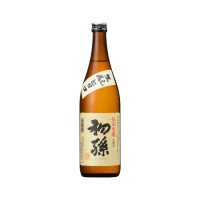The Kimoto and Yamahai methods are traditional sake production methods used to prepare a starter mash. These methods are characterized by their elaborate and time-consuming nature, which leads to a higher concentration of lactic acid. The resulting sake is typically full-bodied and rich in umami.
**1. kimoto method:**
The kimoto method is an older and more artisanal way of preparing the mash. Natural lactic acid is produced by grinding the koji rice several times before adding water to the rice in a wooden vat. This physical processing requires much time and effort, as does the "yama-oroshi" step. Yama-oroshi is the process of grinding steamed rice and koji rice with a stirring tool called "kai" before pouring the mixture into a tank to develop into a yeast starter. This step requires great attention, as the rice must be stirred every two to three hours for an entire day. This effort helps ensure even development of the mixture and promotes natural lactic acid production. The Kimoto method results in a complex and rich flavor profile in the finished sake.
**2. yamahai method:**
The Yamahai method is a more modern variation based on the Kimoto method. Nowadays, a machine, especially a stirring tool or paddle, is used for the yama-oroshi step. Although this method somewhat reduces the traditional manual labor aspect, the Yamahai method retains the longer fermentation time and natural lactic acid formation, resulting in a sake with deep complexity and rich umami flavor.



